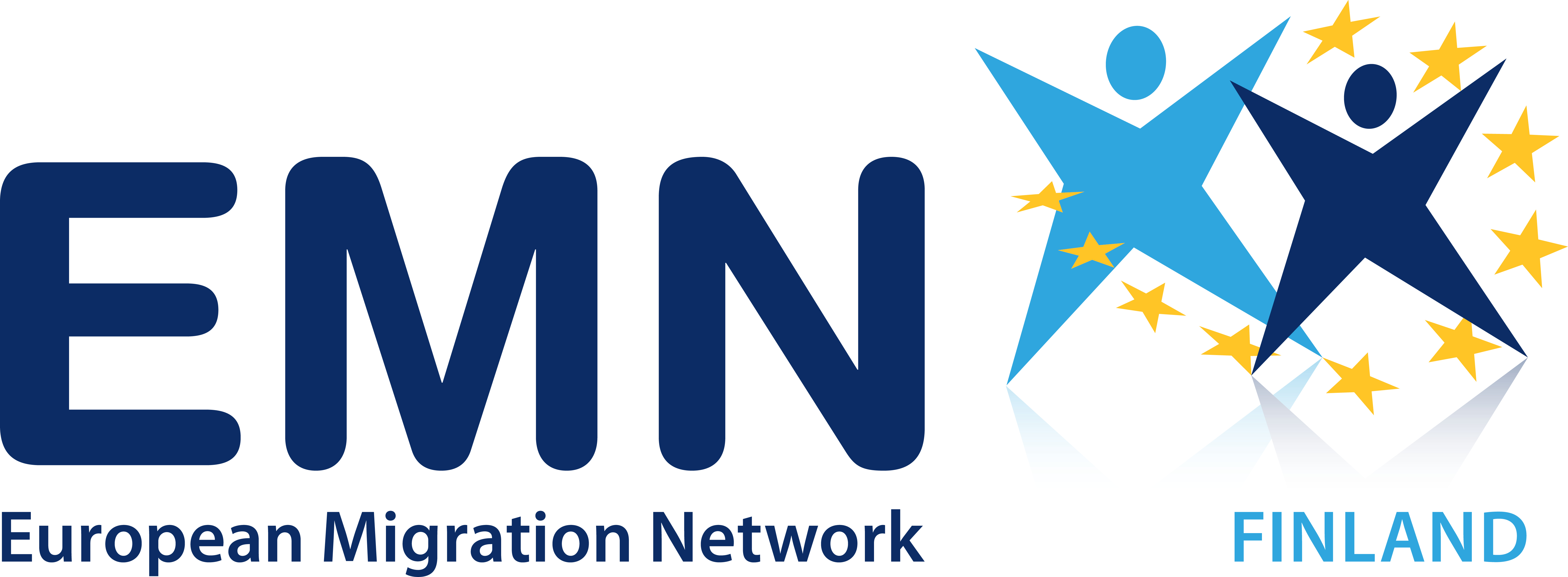European Migration Network Annual Report 2023: An increasing number of immigrants continue to work in Finland
Immigration of skilled workers remains high, and more and more people are bringing their families to Finland. The high number of asylum seekers from the EU has not yet been reflected in Finland. These and other migration phenomena are highlighted in the European Migration Network (EMN) Annual Report 2023.
The European Migration Network (EMN) is a research and information exchange network coordinated and funded by the European Commission. The EMN contact point in Finland is located at the Finnish Immigration Service.
Work-based migration remains high
The number of foreign companies and workers in Finland has grown steadily in recent years. In particular, there has been an increase in the number of workers from non-EU countries. Foreign labour has been used mainly for major construction projects such as the Turku shipyard, in the social and health sectors, and in the growing services sector.
In 2023, slightly fewer first work-based residence permits were granted in Finland than in 2022 (2023: 15,081; 2022: 16,081), but significantly more extended permits were granted than in the previous year (2023: 19,476; 2022: 12,374). This means that workers are staying in Finland.
The internationalisation of the labour market is also reflected in the challenges of labour protection and labour law enforcement. Third-country nationals without appropriate permits have been found working in sectors such as cleaning, construction, transport, agriculture, catering and shipbuilding.
Record number of new students
A record number of first residence permits were granted to students in 2023 (12,795, 2022: 8,383). The number of international students has increased since the COVID-19 pandemic. Last year, students came mainly from South Asian countries such as Bangladesh, Sri Lanka and India. The number of extensions granted has remained more stable (2023: 3,297; 2022: 3,616). This is because the first residence permit is now usually granted for the entire duration of the studies. Students who stay in Finland usually apply for their next residence permit on some other basis.
An increasing number of professionals are bringing their families with them to Finland
In 2023, there was a significant statistical shift, with family becoming the most common reason for granting a residence permit. The number of first residence permits granted on the basis of family ties was 20,278 (2022: 17,284).
The most common group of applicants were other spouses or children of foreign nationals, which means that family members of foreign nationals already working and studying in Finland applied for residence permits. This is a natural consequence of the increase in work- and study-based immigration following the COVID-19 pandemic.
The increase in applications based on family ties also indicates that people who come to Finland to work or study intend to stay longer.
High number of asylum seekers in the EU not reflected in Finland
Last year, 5,372 asylum applications were submitted in Finland. The figure also includes applications submitted by asylum seekers who crossed the eastern border at the end of the year. The number of asylum applications filed in Finland has remained moderate since the peak in 2015.
The Finnish Immigration Service estimates that approximately 3,500–4,500 new asylum applications will be submitted in Finland per year in 2024 and 2025.
The number of asylum seekers arriving in Finland is low compared to the rest of the EU. In the EU, the number of asylum applications rose last year to its highest level since 2015-2016. In total, more than 1.1 million applications were submitted. Germany was by far the largest recipient of asylum applications in the EU.
In addition, a total of 1,426 applications for temporary protection were filed in Finland in 2023, which was less than half the number in 2022 (47,302). Temporary protection is awarded to people fleeing the war in Ukraine.
Webinar on the latest developments
On 21 May 2024, the Finnish Immigration Service and EMN will organise a webinar on the publication of the European Migration Network's Annual Report 2023 - Migration phenomena and trends. The event will introduce the EMN Migration and Asylum Report 2023 and Migration Indicators 2023 statistical overview. Presented at the event will also be the Finnish Immigration Service's latest country report, as well as information and forecasts for the current year.
The event will be opened by Ilkka Haahtela, Director General of the Finnish Immigration Service, and Rafael Bärlund, Director of the EMN Finland Contact Point. The panel of experts will then have a discussion on the reports and the current phenomena in immigration to Finland behind the statistics. Senior Specialists Tuukka Lampi and Jutta Saastamoinen from EMN and Kaisla Huhta from the Finnish Immigration Service will discuss.
- Follow the webinar from 14-15.15: Launch of the European Migration Network Annual Report 2023 - Migration phenomena and trends (in Finnish)
- European Migration Network Migration and Asylum Report 2023
- Key Figures in Immigration 2023
- Immigration to Finland 2/2024 (in Finnish)
Further information for the media
- Interview requests: Finnish Immigration Services, Communications: media@migri.fi, +358 (0)295 433 037
- Tuukka Lampi, Senior Specialist, EMN,firstname.lastname@migri.fi, + 358 (0)295 433 037
- Jutta Saastamoinen, Senior Specialist, EMN, firstname.lastname@migri.fi, + 358 (0)295 433 037



